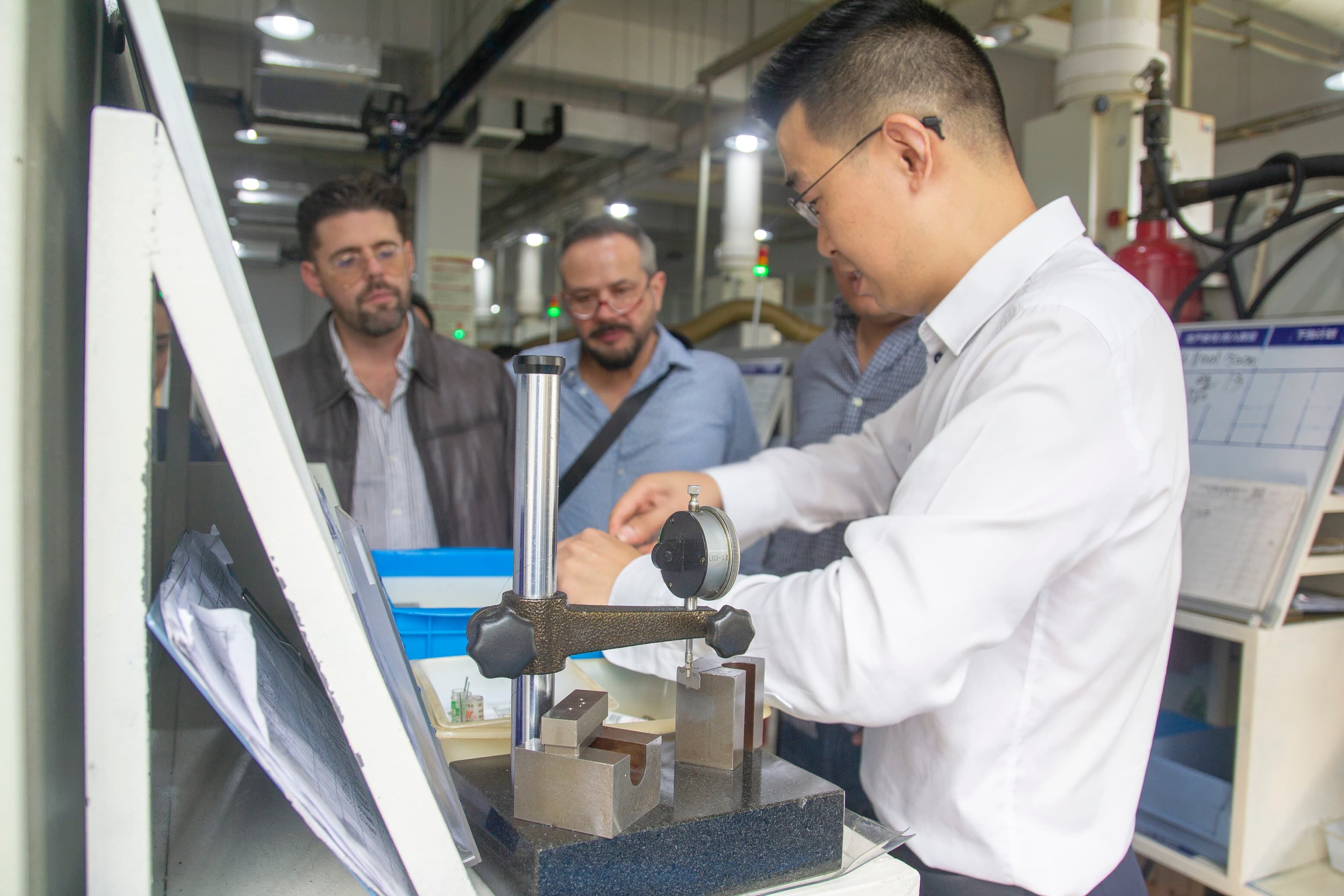Overview of maxillofacial reconstruction challenges
Maxillofacial reconstruction is fraught with challenges due to the complexity of facial trauma and defects. Facial trauma, which can arise from accidents, violence, or congenital conditions, presents unique surgical challenges. Each type of injury requires a specialized approach, often needing the expertise of a multidisciplinary team including surgeons, dental specialists, and orthodontists. The intricate nature of facial structures makes these procedures particularly demanding. Statistics reveal that facial injuries account for a significant percentage of trauma cases, underscoring the imperative for advanced reconstruction techniques. These innovations are pivotal in addressing the functional and aesthetic aspects to improve the quality of life for patients.
What Are Maxillofacial Titanium Plates?
Biocompatibility and Osseointegration Properties
Maxillofacial titanium plates are renowned for their biocompatibility, significantly reducing the risk of provoking an immune response when implanted. This biocompatibility is crucial for successful integration with the body's tissues, particularly bones. Osseointegration, the process where bone tissue naturally integrates with an implant, plays a pivotal role in the long-term success of surgical procedures involving titanium plates. Evidence consistently points out that implants demonstrating higher osseointegration rates correlate to improved stability and lower failure rates in maxillofacial reconstruction surgeries. These properties make titanium an advantageous choice over other materials traditionally used in such procedures.
Titanium vs. Traditional Materials: A Comparative Analysis
When comparing titanium to traditional materials used in surgical implants, its superior strength-to-weight ratio is a key advantage. Unlike materials such as stainless steel and polymers, titanium exhibits a lower risk of corrosion and degradation within the human body, thereby extending the implants' lifespan. Studies indicate this property alone enhances the reliability of titanium as a preferred surgical material. Furthermore, titanium's ability to effectively integrate with human tissue is an appealing feature for surgeons, offering enhanced long-term surgical outcomes. The comparative benefits make titanium a material of choice, ensuring durability and compatibility in intricate maxillofacial surgeries.
Design Variations for Anatomical Precision
Modern titanium plates are meticulously designed to align with the anatomical structures of the facial skeleton, ensuring a precise fit and function. This level of anatomical precision is achieved through innovative customization options, such as 3D modeling and printing. Such technologies empower surgeons to tailor implants to suit the unique morphology of each patient, significantly facilitating surgical interventions. This precision not only minimizes surgical time but also optimizes overall recovery for patients, highlighting the importance of design variations in improving surgical experiences and outcomes. The customized approach underscores the evolving nature of maxillofacial reconstruction technologies that prioritize efficiency and patient-specific solutions.
Surgical Advantages of Titanium Plates
Enhanced Stability Through Internal Fixation
Titanium plates offer superior stabilization for fractured facial bones through internal fixation compared to non-fixation methods. This critical mechanism allows for immediate postoperative loading, essential for effective healing and functional recovery. Clinical studies have repeatedly demonstrated reduced rates of complications, such as malunion or nonunion, with the use of titanium plates. Such outcomes are pivotal in ensuring the surgical stability necessary for fracture healing, making titanium plates a fundamental component in reconstructive surgery.
Adaptability to Complex Facial Contours
Titanium plates can be molded intraoperatively, providing dynamic adaptability to various complex facial anatomies to ensure a snug fit. This adaptability is crucial for reconstructing areas with significant bone loss or irregular shapes, allowing surgeons to tailor the plates precisely as required during surgery. Patients suffering from complex trauma particularly benefit from the flexibility and customization titanium plates offer, leading to more effective reconstructions and improved patient outcomes.
Minimizing Foreign Body Reactions
Titanium is renowned for its reduced incidence of foreign body reactions, significantly minimizing inflammation post-surgery. The smooth surfaces of titanium plates contribute to lower bacterial adhesion, which results in decreased rates of postoperative infections. The inert nature of titanium is instrumental in promoting favorable healing environments for patients, facilitating an efficient recovery process. By minimizing the risk of foreign body reactions, titanium plates enhance the overall success of surgical procedures and patient well-being.
Patient Benefits in Reconstructive Outcomes
Accelerated Bone Healing and Recovery Time
Titanium implants have been shown to significantly speed up bone healing processes, offering a distinct advantage over traditional materials. Studies have demonstrated that the mineral composition in titanium stimulates osteogenesis, or bone formation, around the implant. This quality promotes a swifter recovery timeline, enabling patients to return to normal activities sooner, thereby improving their overall quality of life post-surgery. The integration of titanium plates enhances the overall patient outcomes, ensuring faster rehabilitation.
Reduced Risk of Postoperative Complications
Titanium plates have a lower incidence of postoperative complications, contributing to more predictable surgical outcomes. Research suggests that these implants are less prone to issues such as plate failure or displacement, thanks to their improved biocompatibility. This quality reduces the likelihood of infections and rejection during recovery. The use of titanium in reconstructive surgeries thus offers a harmonious healing process, mitigating risks and leading to more successful outcomes for patients.
Long-Term Preservation of Facial Aesthetics
The long-term stability provided by titanium plates is instrumental in maintaining the facial structure's aesthetic proportions post-surgery. Patients frequently express satisfaction with the cosmetic outcomes, which are a direct result of the robust integration and stability that titanium provides. Follow-up studies have documented that the aesthetic results from surgeries using titanium plates endure for years, significantly enhancing patient confidence and satisfaction. This highlights the superior choice titanium represents in facial reconstructive surgery, ensuring lasting results that stand the test of time.
By focusing on patient benefits, particularly in terms of healing and aesthetics, we can see how titanium plates revolutionize reconstructive surgeries, offering improved outcomes across the board.
Innovations Shaping the Future of Reconstruction
3D-Printed Custom Titanium Implants
The advent of 3D printing technology has ushered in a new era for creating patient-specific titanium implants tailored to meet individual anatomical needs. This technological leap enables surgeons to design and produce implants that fit each patient precisely, optimizing both fit and function. Such customization dramatically improves surgical precision, leading to enhanced success rates in maxillofacial reconstruction procedures. The precision of these 3D-printed models is transforming surgical planning and execution, resulting in better outcomes for patients and healthcare professionals.
Bioactive Surface Modifications
Advancements in bioactive surface modifications are revolutionizing the biological response to titanium implants, promoting faster healing. By incorporating coatings that encourage cell attachment and proliferation, these modifications significantly improve osseointegration, which is crucial for the overall success of an implant. Experimental studies have shown that such bioactive surfaces enhance the longevity and performance of titanium plates. This innovation not only boosts biological compatibility but also accelerates the healing process, making reconstructive surgeries more predictable and successful.
Smart Materials for Dynamic Healing
Innovations in smart materials are opening new possibilities for dynamic healing responses to physiological changes post-surgery. These smart materials can adapt their properties based on the stress and healing stages of the surrounding tissues. This adaptability means they can offer improved support throughout the healing process, providing a level of customization and efficiency previously unattainable. Emerging research shows a promising trend towards leveraging these smart materials, which are poised to further enhance the effectiveness of maxillofacial reconstruction, indicating a growing trend in their integration into modern surgical practices.
FAQs
What role does titanium play in maxillofacial reconstruction?
Titanium is used for its properties like lightweight, strength, and corrosion resistance, making it ideal for reconstructive surgery in the maxillofacial region.
How does osseointegration benefit maxillofacial surgeries?
Osseointegration ensures stability and integration of implants with bone tissue, leading to successful long-term outcomes.
Why are titanium implants preferred over traditional materials?
Titanium has superior strength-to-weight ratio, lower risk of corrosion, and better integration with human tissue than materials like stainless steel.
What innovations are shaping future maxillofacial reconstruction?
Innovations include 3D-printed titanium implants, bioactive surface modifications, and smart materials that adapt to physiological changes.
 EN
EN
 FR
FR
 ES
ES
 AR
AR

